1Perovskite solar cell
For perovskite solar cells, we conduct R&D on hole transport materials with high performance, high durability, and reasonable cost by utilizing technologies for dye-sensitized solar cells. We are also developing construction methods and materials in anticipation of the solar panels of larger size.
![[Power generation principle of perovskite solar cell]](../../assets/img/development/energy-sec1-img1-en.png)
- [1] The light absorbing layer (perovskite crystal) absorbs sunlight and generates electrons and holes, which move to the transparent photoelectrode and counter electrode on the backside, respectively.
- [2] Electrons move through the transparent photoelectrode and through the load to the counter electrode.
- [3] Electrons moved to the counter electrode combine with holes.
[Research outcome (example)]
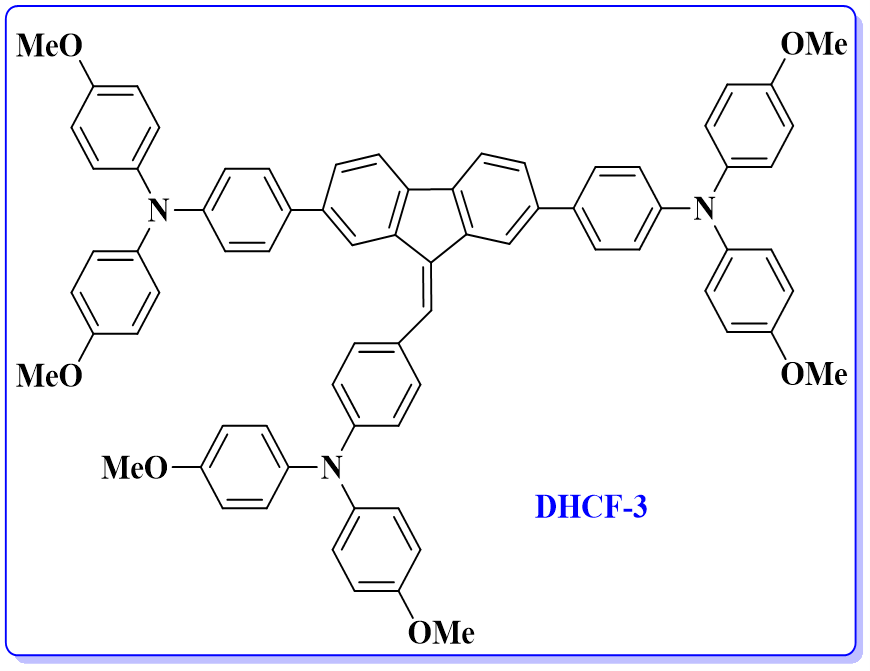
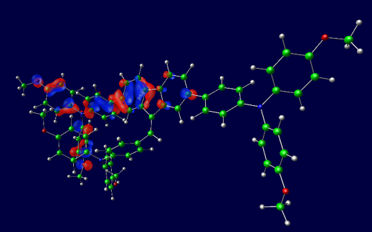
Perovskite solar cells generate electricity by separating electrons and holes (positive holes) excited by light absorption in the perovskite crystal layer and extracting them to the outside. For efficient power generation, it is important to have a P-type semiconductor layer (hole transport layer) that can quickly transport generated holes. We have developed a new hole transport material, DHCF-3, using our expertise in organic semiconductors that we have cultivated in the process of researching sensitizing dyes for dye-sensitized solar cells (patent application filed).
Battery performance is equivalent to that of conventional materials, but material costs are expected to be greatly reduced. We are continuing our research with the aim of further improving battery performance and reducing costs.
2Next-generation solid oxide fuel cell (SOFC)
To develop the next generation SOFC, we are doing research on A: Metal-supported SOFC, B: Proton-conducting SOFC, and hybrid cells combining A and B, with the aim of expanding applications.
A:Metal-supported SOFC


SOFC operates at the highest temperature (700–1,000℃ normally) among all types of fuel cell and delivers the highest power generation efficiency (45–65%) as a single power generating unit. But Conventional SOFC mainly has the following disadvantages:
・Longer startup and shutdown times due to high temperature operating conditions.
・Low durability depending on large thermal stress.
To solve these issues, we are developing a metal-supported SOFC.
B:Proton-conducting SOFC
In addition, SOFC with the highest power generation efficiency in the fuel cell technologies is attracting attention as a technology for reducing global warming.
SOFC is broadly divided into two types:oxide ion-conducting type (O²⁻) and proton-conducting type (H⁺). Oxide ion-conducting SOFC is commercially available and practically used.
In the proton conduction type, H₂O generation associated with power generation occurs only on the air electrode side, making it possible to increase fuel utilization and achieve higher efficiency.
We are engaged in research on proton-conducting fuel cells.
A+B:Expanding applications through hybrid cells
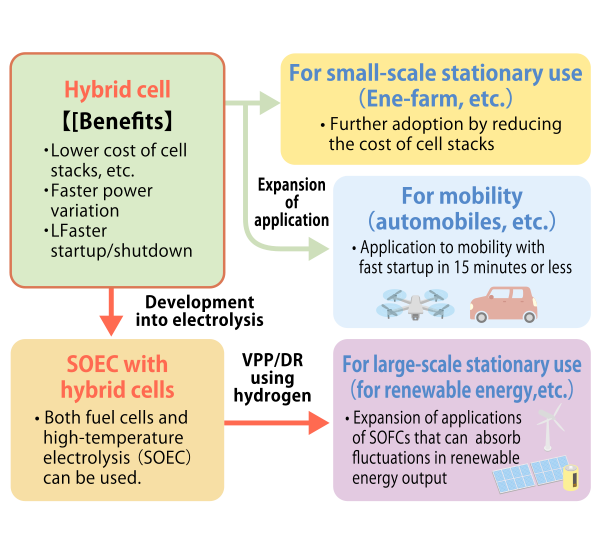
We are taking on the challenge of "development of hybrid cells" that combine A: metal-supported SOFC and B: Protonic Ceramic Fuel Cell:PCFC.
The hybrid cells, which lead to significant improvements in performance and cost, are expected to have applications in mobility and hydrogen production.
3Fluoride ion battery
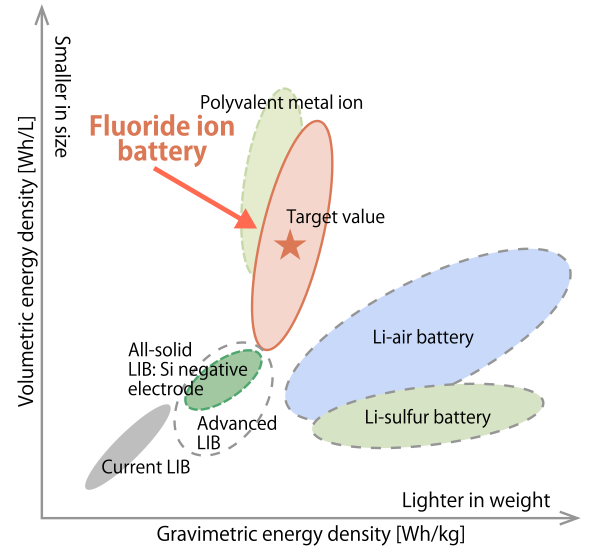
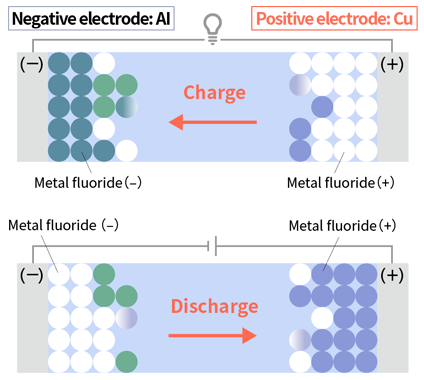
Lithium-ion batteries, which are now in common use, still have material and structural problems in terms of safety, price, and capacity.
Many studies are being actively conducted around the world to solve these issues.
To solve these problems, we are conducting research on fluoride ion batteries, which are expected to become the next generation of rechargeable batteries.
In particular, we are focusing on the electrolyte and developing a unique water-based electrolyte to achieve a significant improvement in performance and ultimate safety.


